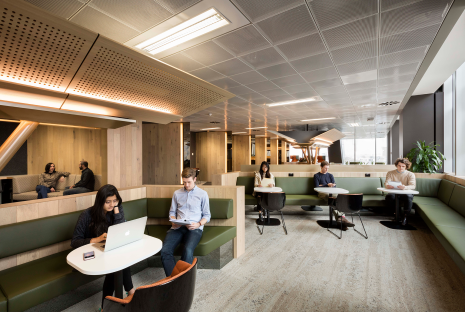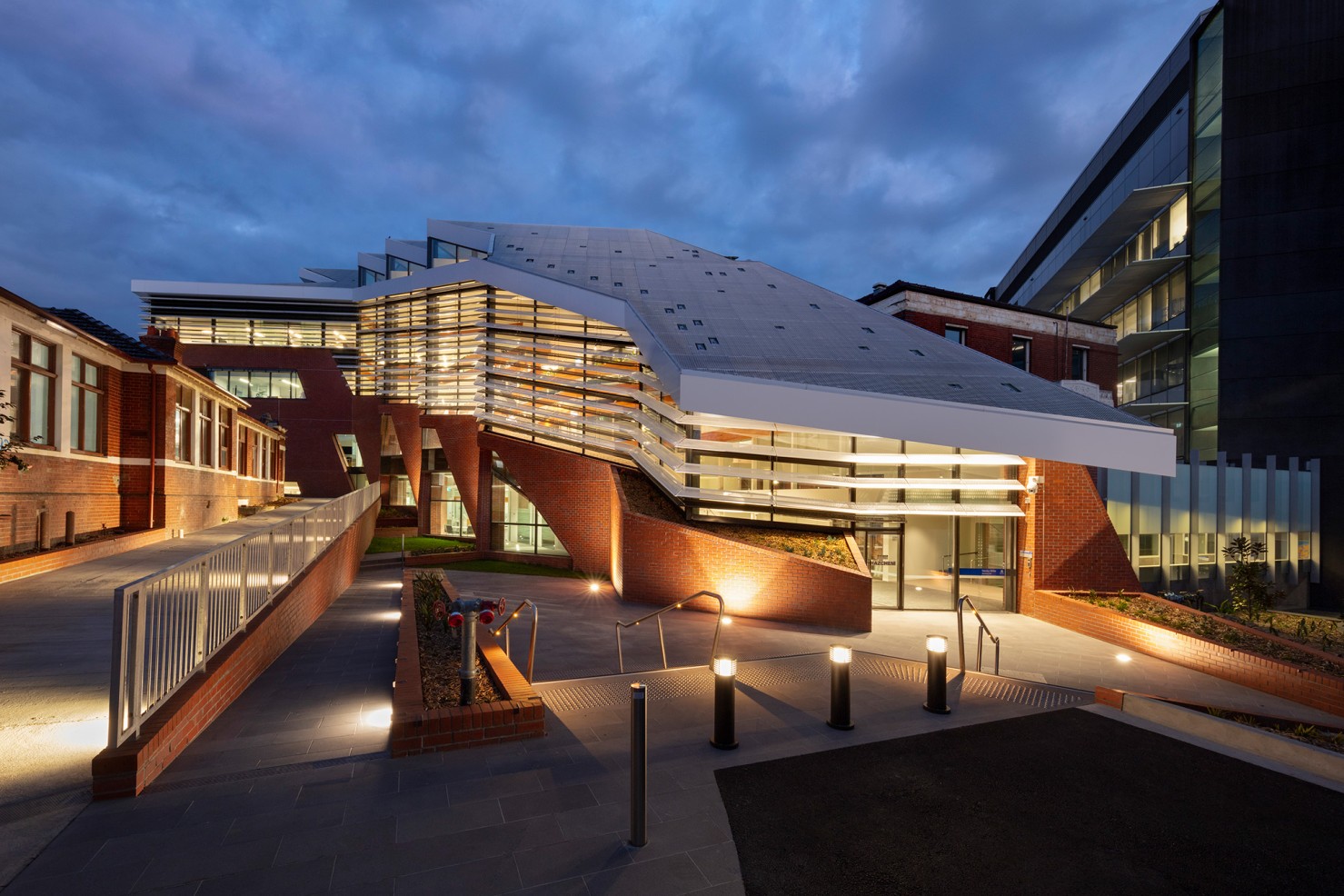
Reimagining Student Spaces
Reinvigorated pedagogies are driving the need for reimagined student spaces and innovative learning environments.
Through our ongoing work in the research and education sector, we strive to design facilities as dynamic hubs of collaboration driven by workplace strategies around wellbeing.

For DesignInc’s architects and designers, creating new facilities that promote connectivity and positivity is as important as finding technical design solutions.
Our Melbourne studio’s recently completed Bio21 Institute Nancy Millis Building (one of the largest biotechnology research centres in Australia) on the University of Melbourne’s Parkville campus, in collaboration with the project’s client multinational biopharmaceutical company Commonwealth Serum Laboratories (CSL), exemplifies the significance of collaborative practice and healthy work environments in research-based workplace thinking. According to Director Christon Batey-Smith and the team, it was all about creating a series of spaces where researchers can collaborate to improve the organisation’s outcomes.
So how was this idea of wellbeing harnessed to deliver effective workplace environments? Firstly, the overall concept is informed by the principles of biophilia, where the benefits of a connection with nature are emphasised through a clearly articulated design that integrates natural light, airflow, greenery and views to the outdoors. As Christon explains, “It was also important this connection not be static, so there’s variety in the building’s volumes and spaces, all of which contribute to a sense of discovery that’s not only integral to Bio21, but any type of research centre.”
Indeed, the state-of-the-art facility accommodates laboratories, offices and areas for research, training and industry engagement, with a central multi-levelled collaboration forum that places the end users’ wellbeing front and centre. This volume, which echoes the tapering form of the building’s external brick base, features landscaped timber planters on its southern edge and on its northern edge, the brick base forms a series of window seat nooks positioned below angled skylights that along with strategically placed highlight windows, let in plenty of natural light. Fresh air also rises towards openings high in the building’s canopy, passively cooling the interior.
It’s the refined web of interconnected spaces, vertical circulation and visual connectivity that adds to the appeal of the forum space, ultimately encouraging researchers and other end users to interact with each other on a daily basis. The connection to nature offers a sense of comfort and multiple settings allow for flexibility in how people choose to work, whether autonomously or in a group. Research doesn’t just happen in a laboratory and our design supports this forward thinking, prioritising wellbeing in the process.
It was also important this connection not be static, so there’s variety in the building’s volumes and spaces, all of which contribute to a sense of discovery that’s not only integral to Bio21, but any type of research centre.
Christon Batey-Smith
Director, DesignInc Melbourne